試す 金 - 無料
Fire- What Is It?
Dig Into History Magazine for Kids and Teens
|July/August 2017
Fire is a chemical reaction, called combustion, during which a fuel combines with an oxidizer to release energy and some byproducts. We see fire, because fire emits energy in the form of light. Sometimes you see products of this chemical reaction as smoke. If you are close enough, you can feel a fire’s released heat energy.

A LOOK AT FLAMES
You see flames because of the electromagnetic energy emitted as light by the hot gases, in part as blackbody radiation from their overall temperature and in part by specific colors emitted by the heated gases. Some of this emitted energy is visible light. The color of visible light emitted by a flame depends on the temperature of the flame. Once flame temperature reaches 500ºC (932ºF), the flame emits a substantial amount of visible light and is termed “incandescent.” Viewed in darkness, the first visible light emitted by a flame appears ghostly gray, because the color-sensing “cones” in the human eye are not activated at such low light levels. If the blackbody radiation is the dominant source of a flame’s color, the flame may become red as its temperature increases. It then changes to yellow and, finally, to an intense bluish-white. Flames from a wood fire appear largely yellow or orange, but, at their base, they can be much hotter and appear blue. White flames emit a good deal of energy as ultraviolet radiation. In fact, fire can give you a sunburn.
このストーリーは、Dig Into History Magazine for Kids and Teens の July/August 2017 版からのものです。
Magzter GOLD を購読すると、厳選された何千ものプレミアム記事や、10,000 以上の雑誌や新聞にアクセスできます。
すでに購読者ですか? サインイン
Dig Into History Magazine for Kids and Teens からのその他のストーリー

Dig Into History Magazine for Kids and Teens
Worshiping Heaven
For almost 500 years, emperors of the Ming and Qing dynasties offered sacrifices and prayers at the Temple of Heaven in Beijing.
3 mins
November/December 2016
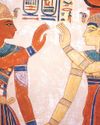
Dig Into History Magazine for Kids and Teens
Peace Reigns
The news spread throughout Egypt—a new pharaoh, Ramses III, now sat on the throne.
4 mins
September 2017
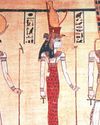
Dig Into History Magazine for Kids and Teens
Problems To The East
Ramses III, the second king of Egypt’s 20th Dynasty, is viewed as Egypt’s last truly great pharaoh.
3 mins
September 2017
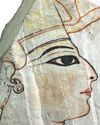
Dig Into History Magazine for Kids and Teens
The Successors
Following the death of Ramses III, eight pharaohs, all named Ramses, ruled Egypt.
1 mins
September 2017
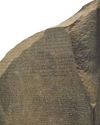
Dig Into History Magazine for Kids and Teens
Stone Code
Hundreds of ships, led by the French general Napoleon Bonaparte, sailed from France in May 1798 on a secret mission.
1 mins
September 2017

Dig Into History Magazine for Kids and Teens
Up & Away!
Eclipse observers often face unexpected difficulties, sometimes on their way to their chosen sites and sometimes at a site itself.
2 mins
January 2017

Dig Into History Magazine for Kids and Teens
Edison's Eclipse Adventure
Thomas Edison (1847–1931) is the best-known inventor in American history.
3 mins
January 2017
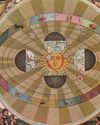
Dig Into History Magazine for Kids and Teens
Digging Up Copernicus
The scientist “who made the Earth a planet” is how the Harvard-Smithsonian astronomer Owen Gingerich refers to Nicolaus Copernicus (1473–1543). Copernicus’ path breaking book, On the Revolutions of the Heavenly Spheres,challenged the centuries-old belief that the Earth stood stationary at the center of the cosmos.
2 mins
January 2017

Dig Into History Magazine for Kids and Teens
Demosthenes & Cicero
Even today, more than 2,000 years after they lived, Demosthenes and Cicero are still considered two of history’s most outstanding orators.
4 mins
May/June 2017

Dig Into History Magazine for Kids and Teens
Confucius & Socrates
Some teachers are so inspirational that their influence lives on long after they die.
3 mins
May/June 2017
Translate
Change font size

